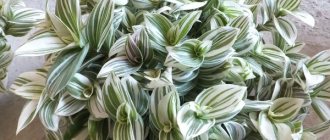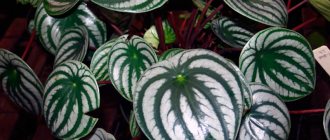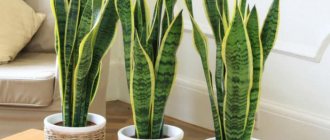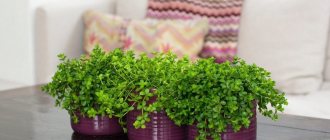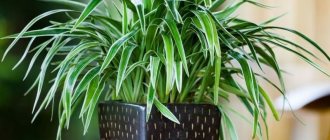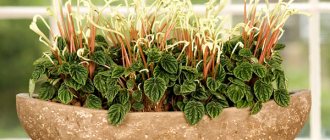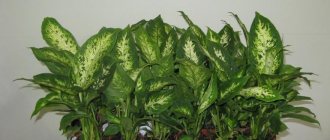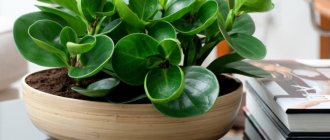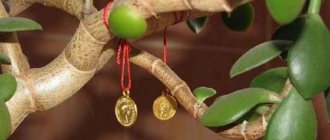The indoor flower peperomia has captured the interest and favor of many amateur gardeners. This is all thanks to the compact size of the shrub and the highly decorative qualities of the foliage, the distinctive feature of which is the lacy edge and pronounced veins.
By its origin, the plant comes from Central and South America. Some wild species can be found in Africa. The representatives of the flora differ radically - there are both bush plants and specimens creeping along the ground. However, not all can be grown at home.
Benefits and harms
In addition to the aesthetic contribution to the surroundings of the home, peperomia also brings more significant benefits. Indoor flowers are capable of actively absorbing harmful and toxic substances from the atmosphere, which evaporate the finishing materials of the room, all kinds of detergents and even tap water. The same exhaust gases entering the apartment through an open window during ventilation have a far from favorable effect on human life.
In addition, this bush-like flower can prevent infectious diseases, ARVI and colds. Peperomia also helps to cope with many other diseases. It will be useful to have an ornamental plant for people with cancer. In this case, it is recommended to place the flowerpot in the bedroom, not far from the bed.
If we consider the benefits of the flower from a medical point of view more deeply, it is worth noting its beneficial effect on the digestive system and gall bladder. Additionally, the plant promotes the regeneration of the body during the healing of wounds and postoperative sutures.
According to many signs, peperomia brings peace, tranquility and a friendly atmosphere to the house. This is due to the fact that the plant is able to “radiate” positive energy, and as a result, act as a barrier to depression.
The presence of peperomia in offices would also be useful. Considering the shrub’s ability to “absorb negativity,” most work moments will not cause much passion, and the atmosphere in the team will become more friendly and united.
However, it is always worth taking into account the fact of the individuality of each person - what is beneficial for one may have a completely opposite effect on another.
Beneficial features
Aesthetic
The plant is valued for its beautiful greenish leaves, which, depending on its decorative form, endow the grower with various color nuances in the form of silver or golden stripes, cream spots or light intricate strokes.
Harmonization of the surrounding space
There is an opinion that peperomia normalizes the energy of the living space, puts you in a positive mood, smooths out quarrels, lifts your spirits, gives peace of mind and good sleep .
Disinfectant
Due to the fact that the plant secretes phytoncides , it purifies the air from various pathogens . Therefore, it is useful to place the flower in the rooms of people who often suffer from colds.
Medicinal
As a representative of the zodiac sign Cancer, Peperomia obtufolia has a beneficial effect on the functional state of the gastrointestinal tract, gall bladder and mammary glands.
The plant is safe for people and does not produce poisonous sap or toxins.
Kinds
There are more than 1000 varieties of this plant of the Pepper family. Each one differs from each other in color and leaf structure, but there are still common characteristics. The flower can be represented either by a compact shrub, an epiphyte growing on the bark of trees, or by a “waxy” succulent or a plant creeping along the ground.
Not all types of peperomia have taken root in indoor conditions. Among the most common are:
- P. Climbing. It is distinguished by its variegated, cream-colored color with greenish splashes. It has rounded leaf plates that elongate as they grow.
- P. Creeping. It also belongs to epiphytes, but has a slightly different leaf shape, reminiscent of an egg with a pointed tip. The color of the plates is bright green, the edges are beige.
- P. Golovataya. A creeping plant with oval leaves of rich green color. The stems can be either light or bright red, the palette varies depending on the lighting of the room.
- P. Round-leaved. A miniature small-leaved peperomia, the bush of which looks like a hat with descending vines. Often used in compact floral arrangements and for arranging terrariums.
- P. Watermelon. It got its name due to its color, which is reminiscent of the characteristic color of this beloved berry. The leaf shape is ovoid, the plates themselves are quite impressive in size for this plant (8-10 cm in length).
- P. Velvety. A shrub variety whose leaves are distinguished by their velvety texture. This type of peperomia blooms, as a rule, in the summer, producing spikelets like plantain inflorescences.
- P. Wrinkled. A low-growing representative of the family with characteristic wrinkled leaves. Reaches a maximum height of 30 cm. There are several subspecies, differing in the color of the leaf blades, which can have either a burgundy tint or an intense green color.
- P. Magnolifolia. It has fleshy, actively branching stems. The main color of the plates is green, the border can be cream or pinkish.
- P. Multicarpal. It has long, elongated stems on which are attached water-lily-shaped leaves.
- P. Sedaya. A characteristic feature of this species is heart-shaped leaf plates with a “gray” tint. The stems of the plant are covered with small fibers.
- P. Tulipolia (Peperomia obtusifolia). It has fleshy green leaves, attached in pairs along a dense, erect stem. There are several subspecies, differing in the shade of color of the edging of the plates. It is unlikely that you can find a photo of the elegant and lush flowering of Peperomia obtufolia - it occurs almost unnoticed, since the plant produces inconspicuous and small inflorescences.
- P. Dolotovitaya. It is classified as a succulent. It has the shape of a leaf plate, visually resembling a circle folded in half.
- P. Graveolens. Another type of succulent. Characterized by an interesting color of the leaves, which have a burgundy color underneath.
- P. Clusielifolia or Peperomia Variegate. It is distinguished by the variegated color of its wedge-shaped fleshy leaves - from green to cream with a burgundy edge. The maximum height of the plant does not exceed half a meter.
Feng Shui meaning
If we rely on the knowledge of eastern sages, a plant will bring positivity if it has round or oval leaves, pointed tips, and if it has thorns, it creates negative biofields. This is why peperomia is an ideal indoor plant . The placement of the flower in the room also plays a role.
Good advice! The best option would be to place it in the corners of the room, where negative energy accumulates the most (quarrels and riots occur constantly).
According to the teachings of Feng Shui, this flower smoothes out “sharp corners” and helps resolve conflicts and misunderstandings. The owner becomes more tolerant of others. In terms of its ability to attract material wealth, peperomia can be compared to Crassula . After the plant appears in the house, wealth and peace come to it.
How does peperomia bloom?
During flowering, peperomia produces peculiar spikelets of a light green or brown hue, on which buds form. Such “tails” reach a length of up to 12 centimeters. Some varieties of the plant have comb-like inflorescences of a cream or white hue. This flower is usually valued not so much for its blooming buds, but for the high decorative qualities of the crown itself.
In most cases, the shrub does not have a pronounced dormant period, so some plant species tend to produce flower stalks a couple of times per season. However, as a rule, this happens once a year.
The flowering period of peperomia begins in the spring and continues throughout the summer months. The buds themselves do not have a distinct aroma.
This is interesting: by the beginning of autumn, the inflorescences transform into dryish berries, from which it is possible to sprout a new bush. However, such a task is only feasible with sufficient experience in the field of floriculture.
Is it possible to keep peperomia in the house: types of plants and signs associated with it
Most of us choose our indoor plants for their flowering or chic decorative appearance. However, there are also flower growers who listen to folk signs and would never buy a flower that, according to superstition, brings trouble. Take peperomia, for example – a gorgeous plant with beautiful leaves. Is it possible to keep peperomia at home, what kind of culture is it, and what signs are associated with it?
How to care
Caring for peperomia at home does not require special skills or dexterity. This is another reason why this plant is widespread among indoor floriculture enthusiasts. Even a beginner can create the proper conditions for favorable growth of a shrub.
Lighting
Depending on the cultivated species, the environmental requirements also differ. Determining the level of required illumination is quite simple - it depends on the color of the foliage. Thus, specimens with a rich green color will feel comfortable on a northern windowsill. If floor heating radiators https://radiki.com.ua/uk/konvektor.html are used, then especially comfortable conditions are created for the growth of peperomia.
Plants with variegated leaves, on the other hand, require more light. However, it is worth positioning the pot so that direct sunlight does not fall on the crown. Insufficient illumination in this case is fraught with the loss of the decorative qualities of the leaves - they acquire a uniform green color and become smaller.
Advice: if you are growing a crop with green leaf blades, but do not have the opportunity to place the flower on a windowsill facing north, then build a barrier to prevent direct rays of the sun from penetrating. A light tulle curtain is quite suitable as it.
Watering
Peperomia can hardly be classified as a moisture-loving plant; the shrub-like flower most often requires a large amount of liquid only during the hot months. You should also make sure that water does not accumulate in the tray of the pot - this phenomenon can cause rotting of the root system.
The best option is to water as the substrate dries. In winter, such activities are carried out extremely rarely, especially for succulents.
Tip: water the plants exclusively with soft, settled water, which is a couple of degrees higher than room temperature.
What should the humidity be?
Peperomia grows naturally in most cases in tropical climates characterized by high humidity. However, she is not at all demanding of this indicator when indoors. The crop tolerates dry air quite well and is not afraid of drying out. This is especially true for succulents.
In the summer, to maintain the vitality of the foliage, it is recommended to periodically spray the crown of the plant with a spray bottle.
This is interesting: specimens with fleshy leaf blades are more resistant to dry climates. This is due to the plant’s ability to accumulate moisture.
Optimal temperature
Taking into account its natural habitat, this flower loves warm climates and at home. The most favorable temperature in the summer months fluctuates around 20-23 degrees; during cold weather, a maximum decrease of up to 15°C is allowed.
The container with peperomia must be positioned so that it is not exposed to drafts. When the temperature drops, the leaves of the bush fall off and turn yellow.
The soil
To ensure the life of the plant, sufficiently loose soil with a neutral or slightly acidic pH is required. The dense structure of the substrate promotes the formation of rot on the roots. The best option is to combine humus, peat, leaf soil and sand in a ratio of 1:1:2:1.
Top dressing
In the summer, apply a universal complex fertilizer with a high mineral content a couple of times a month, according to the instructions on the package. In the cold season, the frequency is reduced to one feeding.
Pest Control
In case of deviation from the recommended standards for keeping peperomia, the risk of insects increases, the vital activity of which significantly worsens the health of the flower. The most common pests are:
- Spider mite. The appearance of a microscopic bug that actively sucks out the vital juices of the plant is due to the dry microclimate in the room. It can be detected by a thin whitish cobweb with which the insect envelops the inner sides of leaf blades or stems. For prevention purposes, the plant should be systematically lightly sprayed. When. if it was not possible to prevent the occurrence, it is recommended to treat the crop with an insecticide. A guaranteed result is achieved with the help of drugs such as Apollo, Flumite and Nissoran.
- Thrips. You can identify the insect by the presence of brown streaks on the underside of the leaf. To combat it, it is necessary to treat not only the plant itself, but also its substrate. Recommended drugs: Aktara, Fitoverm, Karate. You can also use the traditional method - spray the bush with garlic infusion.
- Mealybug. The pest is dangerous because during its life it leaves a sticky trail in which a favorable environment for the formation of fungus develops. The appearance of an insect is signaled by a white cotton-like coating and curled leaves. For the fight, drugs such as Fitoverm, Confidor or Aktara are perfect.
- Shield. An insidious insect that creates conditions for the appearance of another parasite - a tick. The difficulty in removal lies in the presence of a shell on the pest that is resistant to acaricidal agents. In order to save peperomia, you should first remove the scale insects using a cotton swab dipped in a soap solution, and only then treat the crown with an insecticidal preparation.
Conditions for growing at home
Growing peperomia does not require any special effort. Compliance with basic maintenance requirements will help maintain the attractive appearance of this plant. Let's take a closer look at how to properly care for it at home.
Lighting and ventilation
Peperomia needs moderate lighting, so it is best to place it in the northwestern or eastern part of the room. But in winter, the flower, on the contrary, needs stronger lighting, otherwise the leaves will lose color or even fall off.
The plant does not tolerate drafts and temperature changes well, so if you plan to ventilate the room in which the flowerpot is located, you need to move the peperomia to another room in advance.
Air temperature and humidity
Comfortable temperature for growing peperomia is +20…+24 °C. Heat of +30 °C and above is difficult for the plant to tolerate. In winter, the temperature can be reduced to +17...+18 °C, and if you reduce watering, the plant will be able to withstand temperatures up to +10 °C. If you need to increase or decrease the temperature in the room where the flower is kept, you should not do it suddenly.
Important! Too low a temperature leads to depletion of peperomia and its wilting. And too high a temperature can cause a sudden loss of leaves and death of the plant.
The flower requires frequent spraying if it is in a room with low humidity. The optimal humidity level for this plant should be 60–70%.
Reproduction of peperomia
Peperomia can be propagated in several ways, but the most common are cuttings and the single leaf method. The process should be carried out in the spring-summer period during active growth of the crop.
Using a sheet
It is recommended to use a leaf on which only nascent or pronounced aerial roots are present. The material should not be placed in water. The formation of the root system in this case will occur extremely slowly, in contrast to the processes of decay.
The best option is to treat the cut with crushed activated carbon and leave it in this state for at least eight hours. Afterwards, the leaf should be placed in a loose soil mixture, the composition of which meets the requirements, and then slightly moistened. The container with the future plant must be placed in a well-lit place. With this propagation method, the main stem will appear only after six months.
Cuttings
Cuttings of any type are used as seed material - both apical and intermediate shoots are quite suitable. You can root them in several ways:
- in sphagnum;
- in a moistened substrate;
- in water.
The effectiveness of how peperomia will reproduce is determined by the presence of nodes in the shoots. However, it is worth giving preference to those branches that have at least three of them.
Important: it is recommended to place the cuttings in partial shade for several weeks, and only then move them to a permanent place of residence with the recommended lighting parameters.
Rest period
Peperomia does not have a specific rest period. In the cold months, the flower should be provided with the necessary conditions, which mainly consist of observing the temperature regime - the indicators should not fall below 15 degrees Celsius.
Attention should also be paid to the soil; it should not be allowed to become overcooled. To avoid this phenomenon, it is recommended to place a piece of linoleum or foam under the flowerpot. Feeding during the “rest” of the flower is not carried out, or is carried out extremely rarely - once every 30 days.
Plant diseases
Despite its unpretentiousness, peperomia is periodically affected by diseases. In most cases, the phenomenon is associated with non-compliance with growing conditions and insufficient care.
- Falling leaves. If your indoor pet begins to lose leaves, then the problem often lies in insufficient water. This symptomatology is also typical when the plant is exposed to low temperatures. Correcting the situation is quite simple - it is necessary to normalize the microclimate of the room and revise the irrigation system.
- Brown edges on the foliage indicate that the shrub is systematically exposed to temperature fluctuations and drafts. To normalize the condition, it is necessary to move the pot to a warmer place away from frequently opened windows.
- Spots of rot covering the surface of the flower indicate excessive watering of the plant. The deterioration of the condition is especially observed in a room with an incorrectly recreated temperature regime.
- Wrinkled leaves indicate exposure to direct sunlight. When placing a pot, you should take into account the lighting recommendations of a certain type.
Peperomia is a unique flower that not only does not require particularly difficult maintenance conditions, but also makes a significant positive contribution to the atmosphere of your home. However, when growing it, you should strictly follow all the recommendations of specialists on proper care of the plant.
